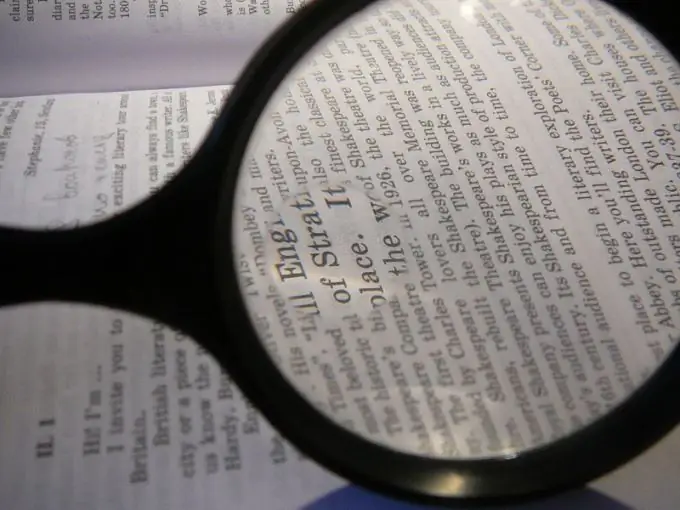A magnifier is an optical device with which a small image of objects can be seen in an enlarged form. They are used for work and in everyday life, allowing you to see details imperceptible to the eye. To select the best magnifier for your needs, you need to familiarize yourself with the characteristics of each type.

Instructions
Step 1
Choose the type of instrument Depending on their purpose, magnifiers are of several types: measuring, hourly, viewing, grain, etc. They are widely used in industry, medicine and agriculture. For example, with the help of a measuring device, defects in the coating of parts are examined and measured, and a grain magnifier is used to determine the infestation of grain by small insects. If your activity is related to the verification of the authenticity of documents, the examination of small images or the study of objects of small shapes, choose viewing loupes. Stop your attention on models with a flat-convex lens surface - it provides high quality images.
Step 2
Choose a Design Viewing loupes come in various designs: tripod and tabletop, compact folding, illuminated, decorative and others. If you have to use a magnifying device for a long time, choose a tabletop design. A compact magnifier is indispensable to read the fine print in a pharmacy or store - you can put it in your pocket or bag. Find a lightweight foldable model that will help your eyes easily access important information anywhere. Consider ruler loops: they prevent you from losing a line while reading.
Step 3
Choose the Magnification The main purpose of a magnifying glass is to help you see a small object. The performance of the tasks presented to the optical device depends on how large the magnification is. For the professions of jewelers, restorers and criminologists involved in examining small details in a small area, magnifiers with a magnification of 4, 0 - 10, 0 times should be used. If you are passionate about embroidery, choose binocular and panoramic devices - they have a large field of view. To read small print, select a compact magnifier in 1.5 - 5.0 times.
Step 4
Choose a Lens Material: Lenses are made from glass, acrylic, and optical polymer. The glass is characterized by high optical properties and is resistant to minor scratches. But a glass magnifier is heavy, and the hand will quickly get tired of it. Acrylic plastic lenses are lightweight and cheap, but the optical quality is poor - the object enlarges with distortion. Stop your attention on polymer lenses. It is a lightweight durable material with high optical properties. With these lenses, you can choose a magnifier with any magnification.







